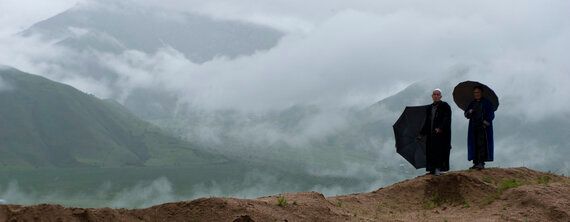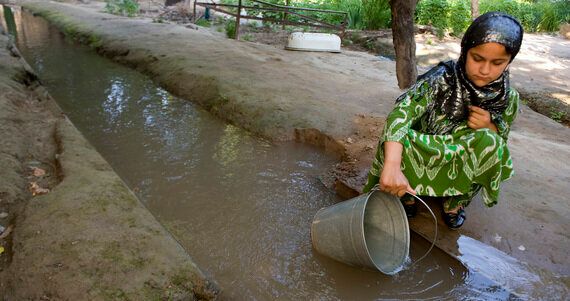Imagine mountains covered in snow and glaciers as old as the Ice Age. Now imagine that 40 percent of Tajikistan's citizens drink impure water drawn from irrigation canals, springs, wells, and rainwater collectors, according to the World Bank. And, according to the UN, more than 50 percent of the Tajik population contracts one or more waterborne or water-related illness annually. This leads to higher levels of infant mortality, higher absence rates at school, and lower work productivity. So why has this happened?

For centuries, people across the region have relied on the Pamir Mountains for fresh water. But, the water isn't getting to where it needs to because Tajikistan's current water delivery infrastructure is dilapidated leading to water loss and contamination. In addition, a combination of climate change and poor water management throughout the region has led to the demise of the Aral Sea located between Kazakhstan and Uzbekistan.
Agriculture, which plays a critical role in Tajikistan's economy, is one of the largest consumers of water. It is also responsible for the pollution of many water sources. Fertilizers, pesticides and livestock contaminate the rivers, irrigation canals and ponds that people use for drinking water. Since Tajikistan is one of the poorest and least developed countries of the region, the government does not have the funds to improve the situation and lacks the policies and enforcement capability to ensure clean drinking water reaches its citizens.
The situation is not brighter in the neighboring countries. In Kyrgyzstan, 24 years after the break-up of the Soviet Union, almost 40 percent of rural households draw their water from rivers, ditches and canals. Only 27 percent of the rural population receives water around the clock, 37 percent have access to drinking water for 12 or more hours per day, and 36 percent - less than 12 hours a day, according to the Kyrgyz government report.

And, where water is available, it's the women and girls who bear the brunt of fetching water for the entire household. Often they spend several hours every day carrying heavy buckets of water from the nearest river or well. One of the village elders once told me that "our girls and women carry so much water daily - their backs constantly ache and their hands get longer. It would be great if they spent more time studying for school."
Climate change, inefficient water delivery systems, and intensive agriculture are making it more and more difficult to get clean water. As the world observes World Water Day on March 22, we need to consider what we need to do to solve water problems in Central Asia and the rest of the world. It's up to all of us.
Images was taken by Ezra Millstein from Habitat for Humanity.